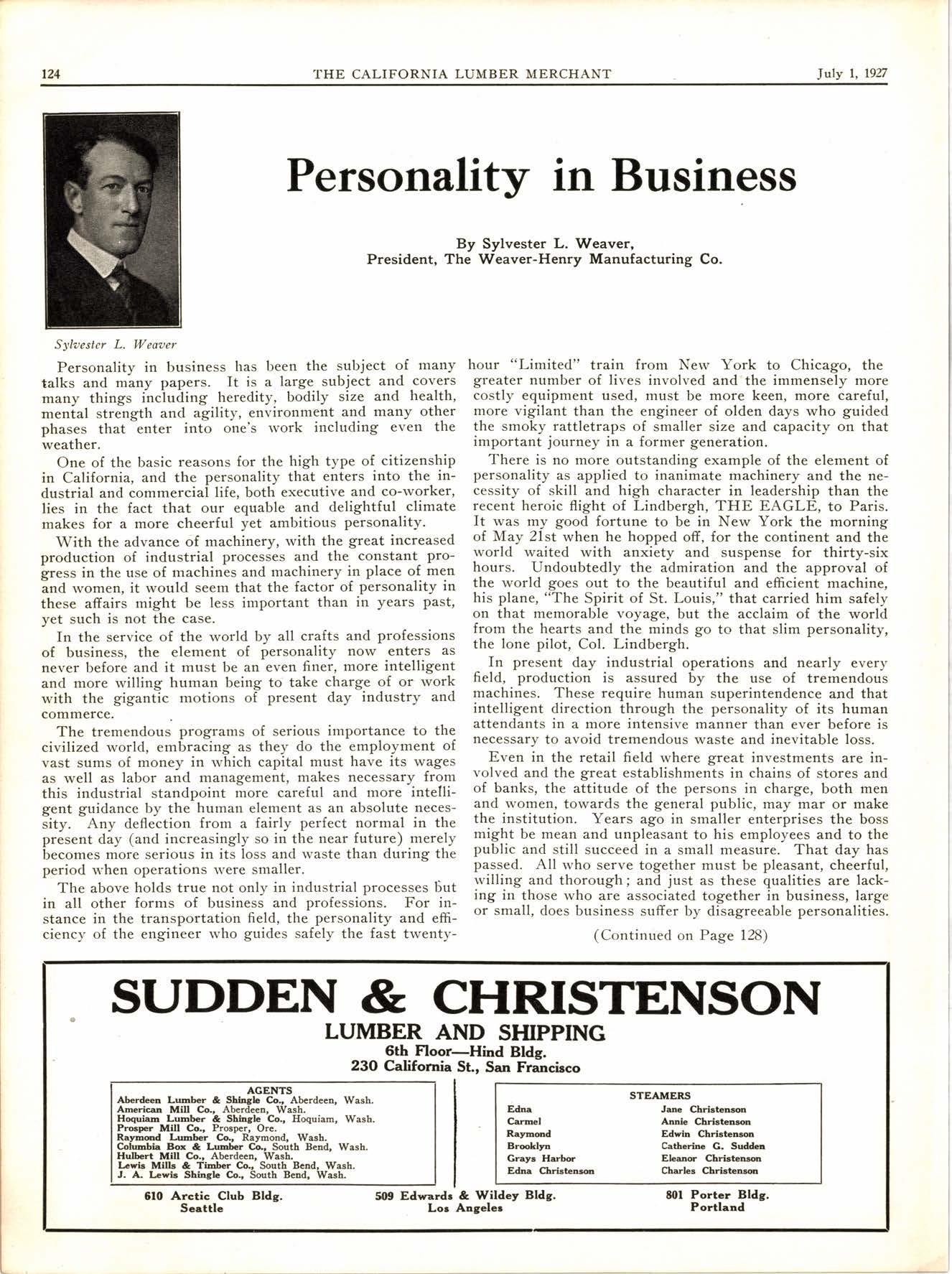
2 minute read
California Redwood Situation
By R. F. Hammatt, Secretary-Manager, California Redwood Association
_ Casual glance at the June 4, 1927, statistical report of the California Redwood Association discloses the following relationship between actual production, orders and shipmlnts for the first five months ol the current vear:
Orders .... 33% above aciual production
Shipments 22% above actual production
Assuming that actual production for 1927 (to the date me-ntioned) is about l5/o below normal, due to extremely unfavorable weather conditions through a long spring season, then the relationship betrveen normal production and actual orders and shipments is, apfroximately:
Orders .. . 18% above normal production
Shipments 7/o; above normal production
A cautious conclusion based on the above might well indicate a trend toward that stabilization which reacts to the advantage of every retail yard and its customers, including the ultimate consumer. I use the expression "trend', ad-visedly-for no industry can most prohtably serve its customers and the ultimate consumer if it is under-producing for extended periods, any more than it can hope io remain financially -sound if it continues to over-produce for any great length of time.
That the.present condition within the Redwood industry has come about in the face of slight decline in total voluml of construction (and particulariy in residential construc- tion) is, of course, highly gratifying, and that it been accompanied bv a "softening" of the market well, it seems to me, for the policies of the Redwood the cooperation of the Retail Yards and the merits rvood "that lasts." has not speaks Mills, of the
Comp_arative figures for fifteen identical Mills, for the pe.riod January 1 to April 30, for the past four years, is as follows:
In other words, Redwood stocks are reduced and sales by the retail yards are greater, a position which is due, in nb small measure, to the loyal cooperation and support given by the yards to the advertising-and trade promotion "work undertaken by the California Redwood Asjociation.
_We hope this work is well begun: believe our Member Mills want it continued: we are convinced that, carried on steadily, logically, thoroughly and with cooperation all along- the line, it rvill show- increased profits for every branch of the lumber industry that manufactures and sells California Redwood.
(Continued from Page 76.)
Total Consumption For 140 Vessels Per Month (Vessel makes lrf round trips per -o"f;?r.,, Fuel Oil (traveling) ........1
Fuel Oil (in port)
Lubricating Oil
Recapitulation
Trucks: Total gas consumption per month, 6,500 trucks, 1,475,500 gals. Total oil consumption per month, 6,500 trucks, 39,000 gals.
Sawmills: 1 mill cutting 60 million ft. of lumber in 1926 purchased 2000 barrels of fuel oil. The total cut for the industry in t926 was approximately 2,000,000,000 ft. of Redwood ahd California White and Sugar Pine and other spe- cies. The mills are also large purchasers of oil and gas for lumber carriers, tractors, etc.
Planing Mills: 25O planing mills in the state during 1926 used approximately:
50,000 gals. of automobile gas.
1l2,5ffi gals, of mill oil.
15,000 gals. of cylinder oil.
Automobiles: (Whotesale, mill and retail er salesmen)
Gals. Gas
Wholesale
Total consumption ..506,ffi g,ffi
Lumber Vessels: Total consumption for 140 vessels per month:
Barrels
Fuel Oil (traveling ....18,375
Fuel Oil (in port) .... 3,570
Lubricating Oil .. ZIO
Gallons
Cylinder Oil 7W
Kerosene +,m
(Lumber vessels alone consume275,ffiO barrels of fuel oil per year.)
Note:-The above figures are based on the best available information and from actual figures obtained from lumber dealers and other official "ourcis.










